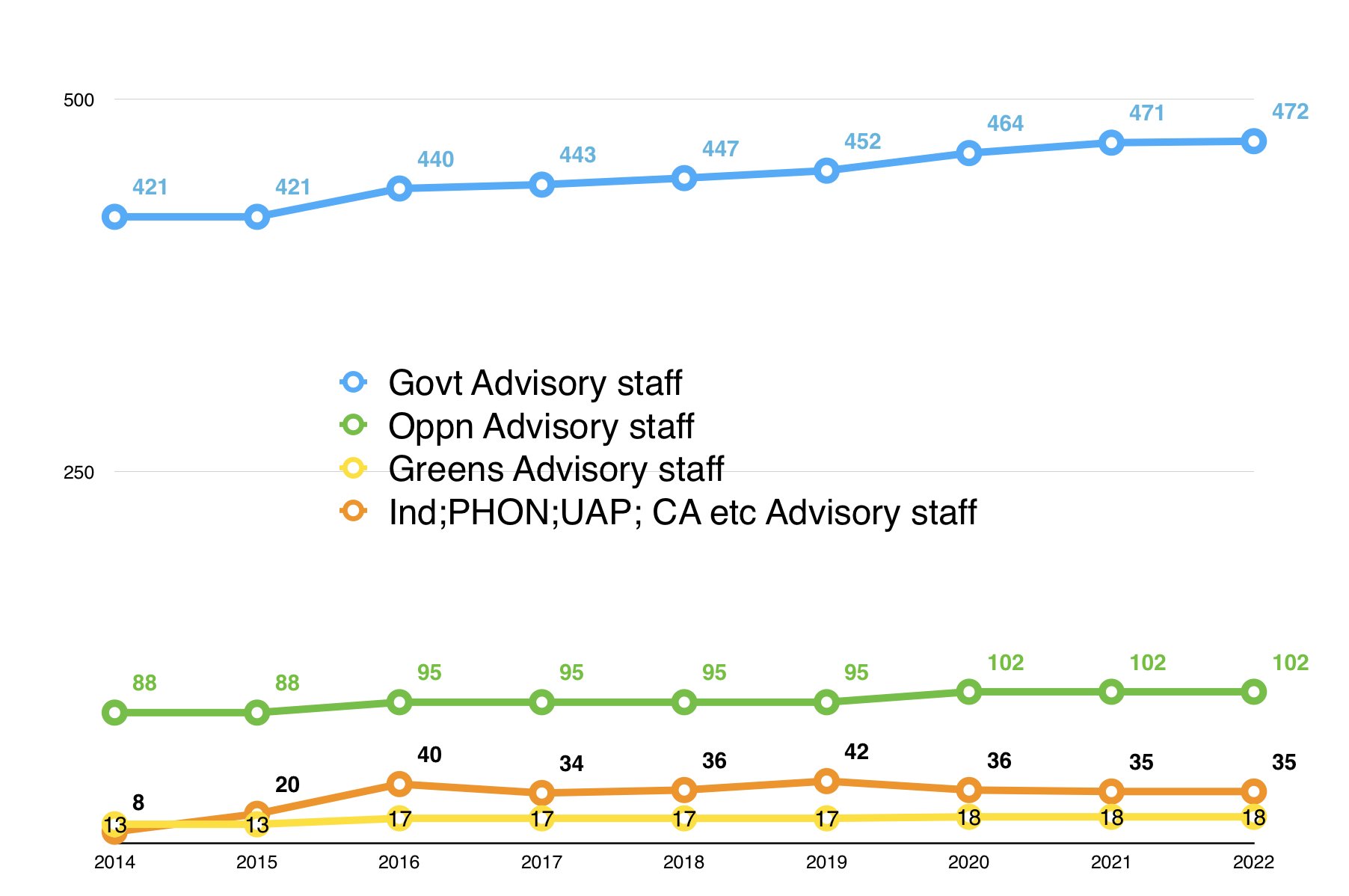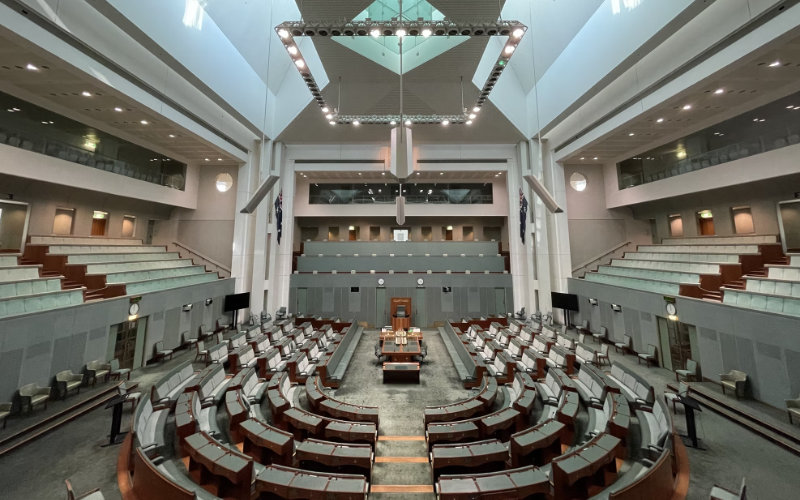Australia is a different place politically, and so is Canberra. Scott Morrison is no longer a one-man employment agency. And many traditionally Coalition-aligned lobby firms have already started picking up Labor staffers, writes Stephanie Tran.
There’s nothing more ex than an ex, as the old saying goes, but there are ways of landing on your feet after being dumped.
Sure, Scott Morrison has is already enjoying the perks of life as an ex-prime minister, turning up in Seoul last week to hobnob with other has-beens such as former US vice-president Mike Pence and former Malaysian leader Mahathir Mohamad and has-been / possible future star Michelle Obama. And on the weekend he was warning congregants at Margaret Court’s church in Perth of Satan’s plan.
There’s never no options for an ex-PM, no matter in what odour they left the top job. Australia now has seven ex-PMs, and they are all doing something useful or making nuisances of themselves or making useful nuisances of themselves. Anyway they are doing OK in their own way.
It’s a less settled path for the lower orders, and an even less settled path for their staff. But there are some options for those political exes facing an existential crisis.
On May 21, 43 new senators and members took their places in the combined parliament of 227: eight senators and 35 members of the House of Representatives. Unsurprisingly considering the change of government and success of the Greens and independents, that’s at the high end, historically, of the 47 federal elections since 1901.
Voters sent 21 MPs packing in the House of Representatives, including heavyweights such as treasurer Josh Frydenberg and Aboriginal affairs minister Ken Wyatt. Another 14 retired, either voluntarily or by preselection. Some of those relinquished seats, such as Fowler, slipped out of their party’s hands. In all, 35 of the 151 seats in the House turned over.
Of the 40 seats being contested in the half-Senate poll, eight were won by newbies. Notable casualties were Eric Abetz (Liberal, Tasmania), Rex Patrick (Independent, South Australia), Stirling Griff (Independent, South Australia) and Zed Seselja (Liberal, ACT). Three senators retired, acrimoniously in the case of Liberal Concetta Fierravanti-Wells. Labor’s Kristina Keneally quit in a failed bid for a House seat.
Musical chairs
With the changing of the guard comes a shake up of lobbyland. As to be expected, ex-Coalition pollies have started bobbing up in lucrative lobbying roles. Morrison’s principal private secretary and former Crosby Textor CEO Yaron Finkelstein is already setting up his own lobbying shop. However, a Labor government means Coalition-centric lobby firms will have to change their tune to keep up.
“Their currency is suddenly worth a lot less because they’re not aligned with the incoming government,” said a former Coalition staffer who did not wish to be named. “A lot of companies that previously employed Coalition aligned lobbyists are looking for Labor-aligned lobbyists.”
In March, former NSW Liberal minister Michael Photios (perhaps reading the tea leaves of the upcoming election) recruited Labor powerbroker Graham Richardson to join PremierNational.
The infamous lobby outfit Pyne and Partners of Christopher Pyne (Coalition MP 1993-2019) has also made a number of new hires following the election, among them Tony Hodges – a senior Gillard government Media advisor.
“Companies that didn’t foster any relations with Labor are suddenly running around desperate to get in touch with the Labor government,” said the staffer.
The change in government will also be a boon for Labor-aligned lobby groups that have been sidelined for almost a decade.
“Firms like HawkerBritton which are very Labor aligned will suddenly be in demand”
The roll call
According to the latest Senate Estimates published in March 2022, there are 416 staff members employed in ministerial offices, with 51 employed in the Prime Minister’s office (PMO).
While the roles and identities of many of the staffers are kept secret, our analysis shows that Scott Morrison employed 10 media advisers. That’s right a fifth of Morrison’s staff were spin doctors.
The number of advisory staff has grown steadily over the past eight years from 530 in 2014 to 627 in 2022.
 Credit: @jommy_tee
Credit: @jommy_tee
Redundancy payments
The deadline for the ex-political staff to apply for severance benefits was Monday, July 18.
According to the Member of Parliament Staff Act (MOPS), government advisers are entitled to up to 48 weeks in redundancy pay depending on how long they’ve served as a staffer. Advisers also get an additional 30% when they’ve been made redundant as a result of an election loss.
“Where employment is terminated as a result of the parliamentarian ceasing to hold office … the severance benefit is increased by 30 per cent. This is because termination under the MOP(S) Act due to your employer ceasing to hold office is not considered by the Australian Taxation Office to be a genuine redundancy.”
An idea of the carnage that occurs after a change of government can be gauged in the fate of Morrison’s offices. He went from 51 staff as PM to four staff as a backbencher. Backbenchers are entitled to four full time staff and one in Canberra, an allocation that has come under scrutiny when Anthony Albanese cut the number allocated to crossbenchers from a total of eight to five.
With scarcity comes desperation. ScoMo might say it’s God’s plan.
(Mark Sawyer contributed to this article).
Stephanie is a journalist and has a law/journalism degree. She was a finalist for the 2021 Walkley Student Journalist of the Year Award and the winner of the 2021 Democracy's Watchdogs Award for Student Investigative Reporting.

